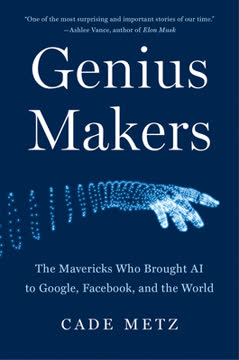نکات کلیدی
1. عملکرد اوج نیازمند برانگیختگی عاطفی بهینه است
"کلید یادگیری این است که این یک فرآیند بنیادی عاطفی است."
مدل U معکوس توضیح میدهد که چگونه عملکرد با برانگیختگی مرتبط است. برانگیختگی کم باعث خستگی و بیتوجهی میشود، در حالی که برانگیختگی زیاد منجر به استرس و اضطراب میگردد. نقطه شیرین—جایی که عملکرد به اوج خود میرسد—در وسط قرار دارد، با مقدار مناسبی از چالش و هیجان. این حالت بهینه تحت تأثیر تعادل انتقالدهندههای عصبی قرار دارد:
- دوپامین: مرتبط با پاداش و انگیزه
- نورآدرنالین: مرتبط با هوشیاری و توجه
- استیلکولین: حیاتی برای تمرکز و حافظه
برای رسیدن به عملکرد اوج:
- نیازهای برانگیختگی شخصی خود را شناسایی کنید
- محیطی ایجاد کنید که از حالت بهینه شما حمایت کند
- از تکنیکهایی مانند ذهنآگاهی برای تنظیم سطح برانگیختگی خود استفاده کنید
2. تنظیم عواطف برای موفقیت و رفاه حیاتی است
"زمانی که احساس اضطراب یا خشم میکنید یا تحت فشار زیادی هستید، بهتر است به احساسات خود فضایی بدهید."
جوجیتسو شناختی یک تکنیک قدرتمند برای تنظیم عواطف است. به جای سرکوب احساسات، که میتواند مضر باشد، آن انرژی را هدایت کنید. دو استراتژی کلیدی:
- برچسبگذاری: احساسات خود را شناسایی و نامگذاری کنید
- بازنگری: موقعیتها را به شیوهای مثبتتر بازتعریف کنید
استراتژیهای اضافی برای تنظیم عواطف:
- روزانه شکرگزاری کنید
- به طور منظم ورزش کنید
- خواب کافی داشته باشید
- زمانهایی را در طبیعت بگذرانید
با تسلط بر تنظیم عواطف، میتوانید در شرایط فشار آرامش خود را حفظ کنید، تصمیمات بهتری بگیرید و روابط خود را بهبود بخشید.
3. تمرکز و جریان برای عملکرد بالا ضروری است
"جریان یک حالت ذهنی است که در آن کاملاً درگیر چیزی هستید و همه چیز دیگر را نادیده میگیرید."
حواسپرتیها را حذف کنید تا تمرکز خود را تیز کنید. چندوظیفگی یک افسانه است—در واقع، بهرهوری را کاهش میدهد و خطاها را افزایش میدهد. به جای آن:
- محیطی بدون حواسپرتی ایجاد کنید
- از تکنیکهایی مانند روش پومودورو (فواصل کار متمرکز) استفاده کنید
- ذهنآگاهی را تمرین کنید تا دامنه توجه خود را بهبود بخشید
برای دستیابی به جریان:
- اهداف واضحی تعیین کنید
- وظایفی را انتخاب کنید که کمی مهارتهای شما را به چالش میکشد
- بازخورد فوری درباره پیشرفت خود دریافت کنید
جریان نه تنها عملکرد را افزایش میدهد بلکه رضایت و خوشحالی را در کار و زندگی نیز افزایش میدهد.
4. عادتها رفتار ما را شکل میدهند و میتوانند مدیریت شوند
"عادتهای خوب زندگی را آسانتر میکنند و از مغز ما به طور مؤثرتری استفاده میکنند. عادتهای بد زندگی را سختتر میکنند و در برخی موارد میتوانند مضر یا حتی کشنده باشند."
درک ساختار عادت کلید تغییر است. عادتها شامل:
- نشانه (تحریک)
- روال (رفتار)
- پاداش (فایده)
برای تغییر عادتها:
- نشانه و پاداش را شناسایی کنید
- با روالهای جدیدی که پاداش مشابهی ارائه میدهند، آزمایش کنید
- از نیتهای اجرایی ("اگر-پس" برنامهها) استفاده کنید
روش "تغییر عادت ۳-D":
- تحریک را توصیف کنید
- خود را با یک رفتار رقیب منحرف کنید
- عادت قدیمی را به تأخیر بیندازید
به یاد داشته باشید، تغییرات کوچک میتوانند به نتایج قابل توجهی در طول زمان منجر شوند.
5. ذهن ناخودآگاه نقش قدرتمندی در تصمیمگیری دارد
"تصمیمگیری شهودی متخصصان همان عملیات اساسی تصمیمگیری آگاهانه را انجام میدهد، با این تفاوت که این کار را بسیار سریعتر و مؤثرتر انجام میدهد و فشار کمتری بر منابع محدود مغز شما وارد میکند."
به شهود متخصصان اعتماد کنید، اما از شهود مبتدیان احتیاط کنید. متخصصان میتوانند با استفاده از دانش ناخودآگاه وسیع خود، تصمیمات سریع و دقیقی بگیرند. با این حال، این توانایی نیاز به تجربه گسترده در یک حوزه خاص دارد.
زمان استفاده از شهود در مقابل تحلیل:
- شهود: موقعیتهای پیچیده با زمان محدود
- تحلیل: موقعیتهای جدید یا زمانی که نیاز به توجیه است
برای بهبود تصمیمگیری شهودی:
- در زمینه خود تخصص عمیق کسب کنید
- ذهنآگاهی را تمرین کنید تا آگاهی بدنی خود را افزایش دهید
- یاد بگیرید که "احساسات درونی" خود را شناسایی و به آنها اعتماد کنید
6. یادگیری مداوم و نورولاستی رشد مادامالعمر را امکانپذیر میسازد
"یادگیری مادامالعمر صرفاً یک شعار نیست. این یک واقعیت هیجانانگیز است."
نورولاستی به توانایی مغز برای تغییر و سازگاری در طول زندگی اشاره دارد. این بدان معناست که ما میتوانیم در هر سنی به یادگیری، رشد و بهبود مهارتهای خود ادامه دهیم.
اصول کلیدی برای یادگیری مؤثر:
- بر ساختن نقاط قوت تمرکز کنید نه اصلاح نقاط ضعف
- در تمرین هدفمند شرکت کنید
- از تکرار فاصلهدار و یادآوری فعال استفاده کنید
- به دیگران آموزش دهید تا درک خود را تقویت کنید
استراتژیهایی برای افزایش نورولاستی:
- به طور منظم مهارتهای جدید یاد بگیرید
- خود را با تجربیات جدید به چالش بکشید
- خواب و ورزش کافی داشته باشید
- مدیتیشن ذهنآگاهی را تمرین کنید
به یاد داشته باشید، مغز مانند یک عضله است—هر چه بیشتر از آن استفاده کنید، قویتر میشود.
7. ساخت تیمهای متنوع و مبتنی بر اعتماد موفقیت سازمانی را افزایش میدهد
"یک SCARF به محل کار بیاورید. میتوانید از پنج اهرم مدل SCARF برای سفارشیسازی محیط کار خود به منظور برآورده کردن نیازهای اساسی کارکنان، بهبود تعاملات بین همکاران، جلوگیری یا حل و فصل موقعیتهای تعارض و شروع فرآیند مدیریت تغییر استفاده کنید."
مدل SCARF پنج حوزه کلیدی را که بر رفتار اجتماعی در محل کار تأثیر میگذارد، مشخص میکند:
- وضعیت
- قطعیت
- خودمختاری
- ارتباط
- انصاف
برای ساخت تیمهای با عملکرد بالا:
- تنوع در مهارتها و نوع شخصیتها را بپذیرید
- فرهنگ اعتماد و ایمنی روانی را پرورش دهید
- مشوقهای معنادار و شخصیسازی شده ارائه دهید
- جریان اجتماعی و همکاری را تشویق کنید
به یاد داشته باشید که تنوع تیم فراتر از جمعیتشناسی است—شامل تنوع شناختی و نقاط قوت متنوع نیز میشود. با بهرهگیری از این تفاوتها و ایجاد محیطی مبتنی بر اعتماد، سازمانها میتوانند به نتایج شگفتانگیزی دست یابند.
آخرین بهروزرسانی::
FAQ
What's The Leading Brain about?
- Neuroscience and Leadership: The Leading Brain integrates neuroscience with leadership strategies, emphasizing the importance of understanding brain functions to enhance leadership effectiveness.
- Peak Performance: It provides strategies for achieving and sustaining peak performance by focusing on emotional regulation, focus, and habit management.
- Team Dynamics: The book explores how to build high-performing teams by applying neuroscience principles to foster trust, diversity, and collaboration.
Why should I read The Leading Brain?
- Science-Based Strategies: The book offers practical, science-backed strategies for improving personal and team performance, making it relevant for anyone in a leadership role.
- Transformative Insights: Readers gain insights into how brain functions affect decision-making, motivation, and emotional regulation, leading to improved workplace dynamics.
- Engaging and Accessible: Complex neuroscience concepts are presented in an engaging and accessible manner, making it easy to apply the knowledge in real-life situations.
What are the key takeaways of The Leading Brain?
- Understanding Arousal: The Inverted U model illustrates that optimal performance occurs at a specific level of arousal—not too low (boredom) and not too high (stress).
- Emotional Regulation: Emphasizes the importance of regulating emotions to maintain focus and achieve peak performance, with techniques to manage stress and anxiety.
- Habit Formation: Discusses the cue-routine-reward loop of habits, explaining how to change bad habits and establish good ones through small, incremental changes.
What are the best quotes from The Leading Brain and what do they mean?
- “Real leadership begins and ends in the brain.”: Highlights the crucial role of understanding brain science for effective leadership and team interaction.
- “Neurons that fire together wire together.”: Emphasizes neuroplasticity, indicating that repeated behaviors strengthen neural pathways, facilitating habit formation.
- “Peak performance comes at the top of the graph.”: Refers to the Inverted U model, stressing the importance of finding the right level of arousal for optimal performance.
How does The Leading Brain define peak performance?
- Optimal Arousal Level: Peak performance is achieved when operating at the right level of arousal, neither too low nor too high.
- Neurochemical Balance: Discusses the role of dopamine, noradrenaline, and acetylcholine in achieving focus, motivation, and learning.
- Personalized Approach: Emphasizes that the sweet spot for peak performance varies from person to person, requiring self-awareness of unique triggers and responses.
What is the Inverted U model mentioned in The Leading Brain?
- Performance and Arousal Relationship: Illustrates the relationship between arousal and performance, showing an optimal level for peak performance.
- Too Much or Too Little: Explains that too little arousal leads to boredom, while too much causes stress, both hindering performance.
- Personal Variation: Highlights the need for self-awareness in finding one’s personal sweet spot, as the optimal arousal level varies among individuals.
What is the SCARF model in The Leading Brain?
- Five Key Factors: Identifies Status, Certainty, Autonomy, Relatedness, and Fairness as crucial factors influencing social interactions.
- Impact on Performance: Addressing these factors can minimize threat responses and maximize engagement and collaboration among team members.
- Practical Application: Suggests using the SCARF model as a diagnostic tool to improve team dynamics and foster a supportive workplace culture.
How does The Leading Brain address habit management?
- Cue-Routine-Reward Loop: Explains that habits consist of a cue triggering a routine, followed by a reward, emphasizing understanding this loop for habit change.
- Kaizen Approach: Advocates for making small, incremental changes to habits rather than drastic overhauls, making the process less daunting.
- Implementation Intentions: Suggests using “if/then” plans to create new habits by linking specific cues to desired routines, enhancing success likelihood.
How does The Leading Brain address the concept of emotional regulation?
- Importance of Emotions: Emphasizes that emotions play a critical role in decision-making and performance, with better outcomes through understanding and managing them.
- Techniques for Regulation: Provides techniques such as mindfulness and cognitive reappraisal to help individuals respond to stressors effectively and maintain focus.
- Neuroscience Insights: Discusses the brain regions involved in emotional regulation, particularly the prefrontal cortex and the amygdala, and their interaction during emotional experiences.
How can I sharpen my focus according to The Leading Brain?
- Minimize Distractions: Advises eliminating potential distractions from your environment, such as decluttering your workspace and silencing notifications.
- Set Concentration Time: Recommends establishing dedicated time blocks for focused work, minimizing interruptions to improve productivity and concentration.
- Practice Mindfulness: Engaging in mindfulness exercises can help train the brain to maintain focus and reduce mind-wandering, leading to better performance.
How can leaders apply the insights from The Leading Brain in their organizations?
- Foster a Brain-Friendly Environment: Create a workplace that supports employee well-being through healthy practices, enhancing cognitive function and emotional resilience.
- Encourage Diversity: Build diverse teams with varying skills and perspectives to enhance creativity and problem-solving, reflecting diversity in demographics and approaches.
- Utilize the SCARF Model: Apply the SCARF model to assess and improve team dynamics, ensuring employees feel valued, secure, and connected, leading to increased trust and collaboration.
What role does unconscious decision-making play in The Leading Brain?
- Speed and Efficiency: Highlights that many effective decisions are made unconsciously, allowing for quicker and more efficient responses, especially in high-pressure situations.
- Expert Intuition: Discusses how expert intuition, developed through experience, enables individuals to make sound decisions without conscious deliberation.
- Balancing Conscious and Unconscious: Emphasizes the importance of balancing both conscious analysis and unconscious intuition for optimal decision-making outcomes.
نقد و بررسی
کتاب مغز پیشرو به خاطر رویکرد علمیاش در بهبود عملکرد و رهبری مورد تحسین قرار گرفته است. خوانندگان از توضیحات قابل فهم آن در مورد مفاهیم علوم اعصاب و استراتژیهای عملی برای دستیابی به عملکرد اوج قدردانی میکنند. این کتاب به موضوعاتی مانند مدیریت استرس، تنظیم احساسات، تمرکز، شکلگیری عادت و ساخت تیم میپردازد. بسیاری از خوانندگان آن را نسبت به کتابهای خودیاری معمولی تازه و نوآورانه مییابند، زیرا بر پایهی تحقیقات علمی استوار است. برخی از خوانندگان اشاره میکنند که هرچند کتاب جامع است، اما ممکن است برای کسانی که با ادبیات علوم اعصاب و عملکرد آشنا هستند، اطلاعات جدید زیادی ارائه ندهد.
Similar Books














